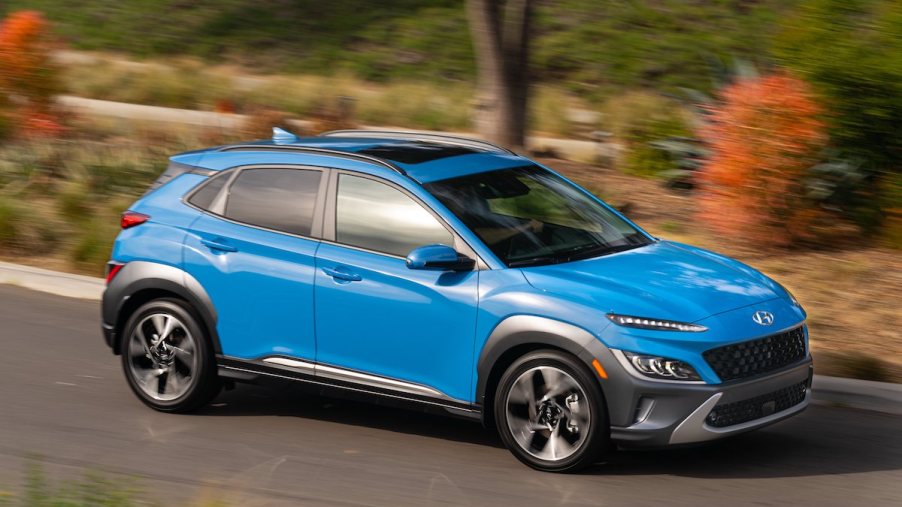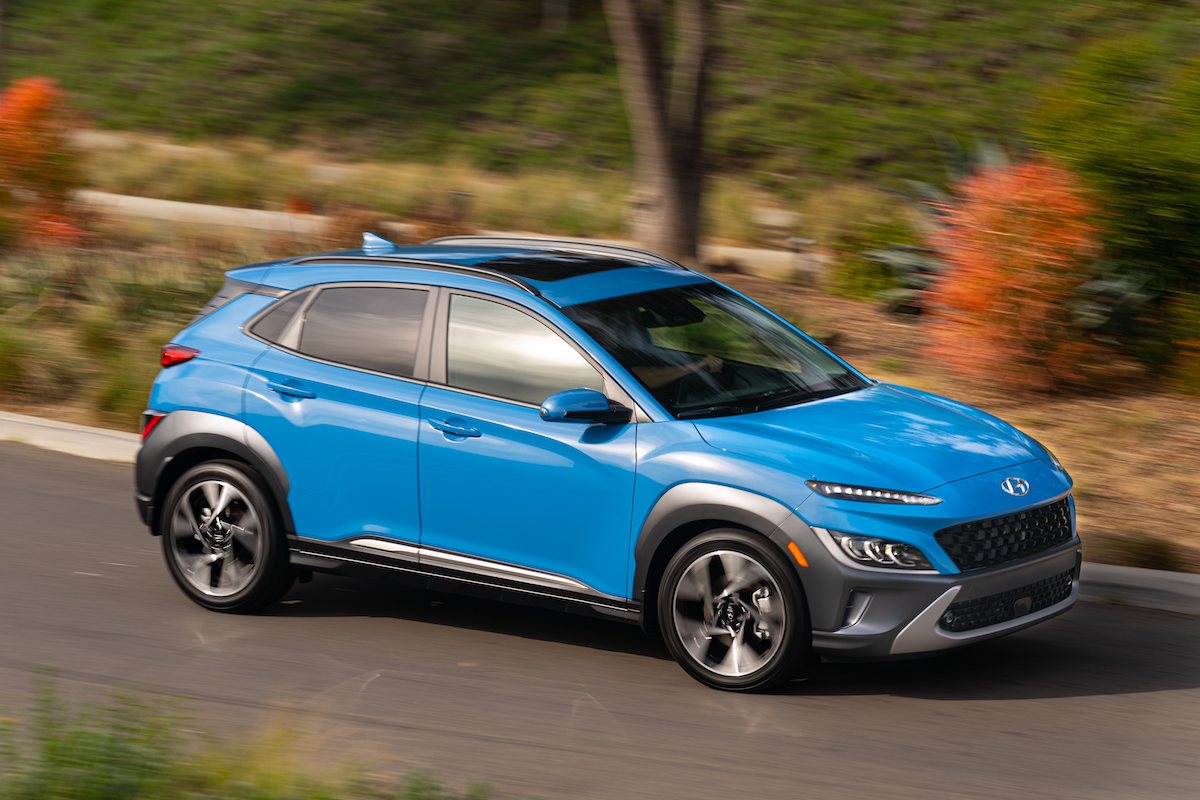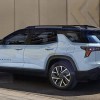
6 Reasons to Buy a 2022 Hyundai Kona Electric, not a Toyota bZ4X
The Hyundai Kona is already one of the best subcompact SUVs, but its electric version is sorely underrated. That’s somewhat understandable: As more EVs trickle into the market, rivals keep overshadowing the Kona EV. One of those contenders is the Toyota bZ4X, which debuted last spring. The bZ4X might feature available all-wheel drive and out-of-this-world styling, but here are six reasons why the 2022 Hyundai Kona Electric is better.
1. The 2022 Hyundai Kona Electric has a lower starting price

According to Hyundai, the Kona EV starts at an even $34,000 before any destination fees or taxes. Toyota lists the bZ4X’s base price at $42,000. Both vehicles are eligible for a federal EV tax credit of up to $7,500.
However, Consumer Reports wasn’t exactly blown away by the Toyota bZ4X XLE’s features at such a high price point. It has a manual rear hatch and lacks any power adjustability for the front seats. The cabin feels saturated with clunky plastic trim, and you’ll have to pay a premium for any exterior paint color other than black.
2. The 2022 Hyundai Kona Electric boasts a better standard warranty
According to Car and Driver, both the battery and powertrain warranties cover 10 years or 100,000 miles on the Hyundai Kona Electric. Its limited warranty lasts for five years or 60,000 miles, and complimentary maintenance is offered for three years or 36,000 miles.
All of the Toyota bZ4X’s electrical components (including the battery) are covered for only eight years, C/D reports. You get only two years of complimentary maintenance, and the limited warranty cuts off at three years. The powertrain warranty is half of what the Hyundai Kona Electric offers.
3. The Kona also gets better fuel economy
The EPA has rated the Hyundai Kona EV for 120 MPGe combined city/highway. In comparison, the Toyota bZ4X is rated for only 94 MPGe combined.
The bZ4X gets its best fuel economy of 107 MPGe on the highway, which seems decent. However, C/D reports the Toyota EV earned only 86 MPGe on the highway during real-world testing.
4. Hyundai offers better driving range on the standard model
Every Hyundai Kona EV comes standard with 258 miles of range. When hooked up to a DC fast-charger, it takes 47 minutes to restore 80% of the battery.
With FWD, the Toyota bZ4X XLE’s battery provides 242 miles of range. The Limited trim offers 10 extra miles. Toyota claims FWD batteries can reach 80% in less than a half-hour with fast charging.
If you want the AWD dual-motor setup, your range drops to 228 miles on the Limited trim. The AWD Toyota bZ4X XLE has 222 miles of available electric range.
Fast-charging the bZ4X might also be a problem if you live in colder regions. If the temperature drops below freezing, the automaker warns that AWD models must be recharged at slower speeds for several hours.
5. The base model has higher torque output
According to Edmunds, the Hyundai Kona EV is capable of 201 hp and 291 lb-ft of torque. Edmunds says the Toyota bZ4X makes the same amount of horsepower but produces only 196 lb-ft of torque. More torque allows the vehicle to accelerate faster from a complete stop, making the Kona EV feel peppier.
6. The 2022 Hyundai Kona Electric weighs less than the Toyota bZ4X
When you drive a larger vehicle, you often have to sacrifice some handling for that extra interior space. The 2022 Hyundai Kona Electric weighs little more than 3,700 pounds, giving it better fuel economy and driving dynamics. It’s also less than 166 inches long, making it easier to park in small spaces.
The Toyota bZ4X measures 20 inches longer and weighs almost 4,300 pounds more than the Kona Electric. Though critics found its ride quality agreeable, Consumer Reports testers say the Kona EV is far more engaging.


